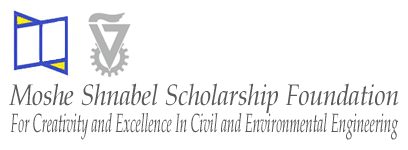Recipients of the award for 2017

Eldar Lev-Ran and Avia Shtrum, recipients of the award, 2017.
This year Eldar Lev-Ran and Avia Shtrum were awarded for their development of a computer application that monitors Bell’s palsy.
Bell’s Palsy causes medical risks, functional difficulties (e.g. in eating, drinking and speech) and primarily mental anguish due to the aesthetic and social damage caused to those who contract this disease. Even though most patients recover spontaneously, in some patients there is no full return of facial movement, or synkinesis subsequently develops. The treatment method for paralysis (facial retraining) trains the patient in precise, symmetrical and isolated facial movements, and it assists in recovery. Despite successes of the method, the treatment encounters many challenges: Long recovery time, gradual, slow and difficult improvement that is hard to quantify. This leads to treatment that is liable to be sub-optimal and frustrating for both patient and therapist. This is due to the fact that there is no efficient and automatic way to monitor recovery of a patient affected with palsy during rehabilitation, since most therapists photograph and print images of the patient, and with an ordinary ruler measure and examine the difference in the symmetry of facial lines between both sides of the face – the damaged and healthy sides – throughout the rehabilitation time. This manual diagnosis takes time, and it is not always able to provide reliable measurements and indices of the extent of rehabilitation.
Software that automatically analyzes facial images and retrieves quantitative versions of these indices is likely to ease and improve the diagnosis, monitoring and treatment. It appears that the referenced project by the pair of students constitutes a significant step in this direction, since it enables the therapist or a person affected with palsy to perform continuous monitoring and receive reliable indicators regarding the change in the palsy’s condition over time. The Committee received the impression that the students addressed the problem with a promising approach, proved in their work an independent ability to find relevant scientific material and assimilate it, showed an ability to use existing software libraries, as well as a talent for the planning and application of an original software system. They also demonstrated a fine ability to cope with the algorithmic problems that they were required to solve, while also providing receipt of a simple and rapid indication of the symmetry existing in the face, and the change and extent of improvement over time. Beyond the academic interest and achievement, this project is also likely to contribute significantly to patients’ welfare in the community, and the potential for its use worldwide.
Sincerely,
Prof. Yoram Shiftan
Development of a Computer app to monitor Bell's palsy (Hebrew)

